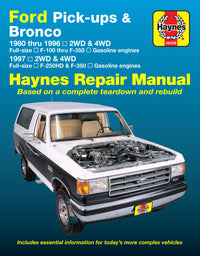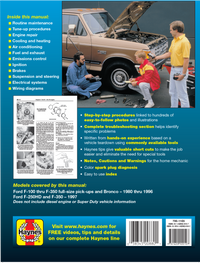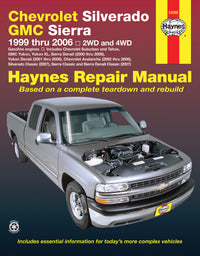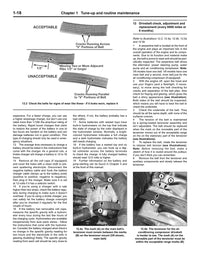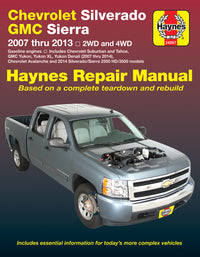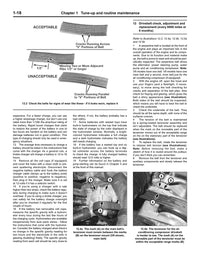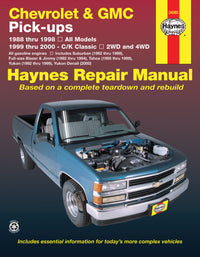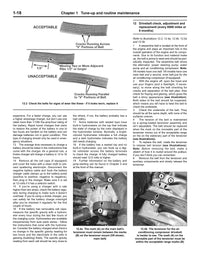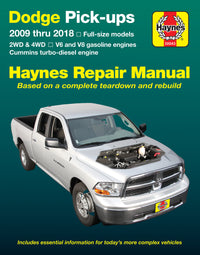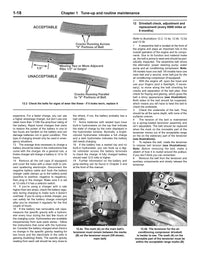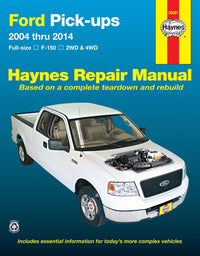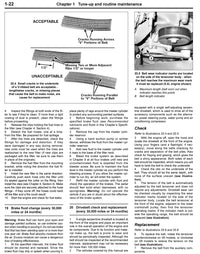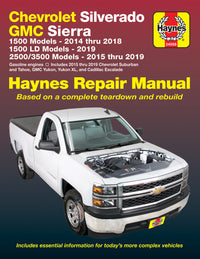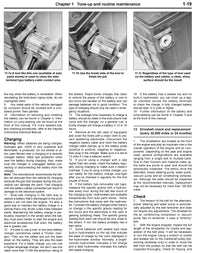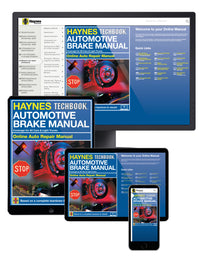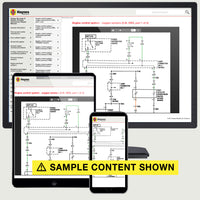Towing season is here, and GMC Sierra 1500 owners know how important it is to keep their truck in top condition before hitting the road. A well-prepared vehicle can make all the difference in ensuring your towing experience is smooth and safe.
The GMC towing guide can help you navigate the inspection process, highlighting the key components to check for optimal towing performance. From tires and brakes to the electrical connections, this guide will cover everything you need to do to prepare your Sierra 1500 for towing season.
Why Regular Maintenance Matters Before Towing
A proper pre-towing inspection ensures that every system is functioning as it should. Towing can put a significant strain on your truck, so it's important to ensure that components such as the engine, brakes, suspension, and electrical system are up to the task. Following a GMC towing guide helps you avoid common issues such as overheating, brake failure, and electrical malfunctions that can occur while towing.
The benefits of a pre-towing inspection go beyond just safety. Proper maintenance can improve fuel efficiency, enhance towing performance, and extend the lifespan of your truck. With the GMC Sierra 1500’s capabilities, it's important to keep your vehicle in peak condition, especially if you're planning on towing heavier loads.
Engine Compartment Inspection
Before towing, the engine compartment should be thoroughly checked. Fluids, belts, and the battery play a major role in ensuring your GMC Sierra 1500 operates smoothly during towing.
-
Fluids
The engine oil, coolant, brake fluid, power steering fluid, and transmission fluid should all be checked and topped off if necessary. Keeping fluid levels within the recommended ranges helps prevent overheating, ensures smooth braking, and guarantees optimal engine performance. Refer to your car manual for the correct fluid types and levels for your specific model.
-
Belts and Hoses
Inspect the belts and hoses in the engine compartment for any signs of wear or damage. Look for cracks, fraying, or loose connections that could cause serious problems while towing. A broken belt can lead to engine failure, which can ruin your towing plans. If you spot any damage, replacing the belts or hoses is a relatively easy fix before starting your towing journey.
Inspecting and replacing belts and hoses is explained in Chapter 1, with engine-specific details available in Chapter 2A, 2B, or 2C, depending on your engine size.
-
Battery
A weak or damaged battery is one of the most common causes of breakdowns. Check the battery terminals for corrosion and ensure they are securely connected. If your battery is over three years old, it may be time to replace it. A weak battery can fail when under strain, so keeping it in good condition will prevent unexpected surprises during your towing trip.
Battery inspection, terminal cleaning, and replacement steps are included in Chapter 5A – Starting and charging and supported by quick tips on page 12 (Booster battery starting and key fob battery replacement).
Tire Inspection
Tires play a critical role in your GMC Sierra 1500’s towing performance. Proper tire pressure ensures better handling, improves fuel economy, and supports the weight of the trailer. Before heading out, check the pressure of all tires, including the spare tire. Your GMC Sierra 1500 manual will provide the exact tire pressure specifications for your truck.
-
Tire Condition
Beyond pressure, the condition of your tires is equally important. Look for uneven wear, cracks, or punctures. Uneven wear may indicate misalignment or suspension problems, which can worsen during towing. If you notice any damage or if the tread is too worn, it is time to replace the tires. Don’t forget to check the trailer tires as well.
Guidance for checking tire condition and pressure is available in Chapter 1, particularly on page 10.
-
Rotation
If it’s been a while since your tires were rotated, consider rotating them before towing season. Rotating your tires ensures they wear evenly and improves their lifespan. Regular tire rotation can also prevent unnecessary strain on the vehicle’s suspension system.
Tire rotation procedures are also located in Chapter 1 – Routine maintenance and servicing and referenced under general tire maintenance on page 10.
Brake System Inspection
Your GMC Sierra 1500's brakes are critical when towing heavy loads. Towing increases the demand on your brakes, so checking them is essential before towing season.
-
Brake Pads and Rotors
Check the thickness of the brake pads and the condition of the rotors. Worn brake pads can reduce braking efficiency and increase stopping distances, which can be dangerous when towing. If you notice any unusual noises, such as squealing or grinding, it may indicate that the pads need to be replaced.
Inspection and replacement of brake components are covered in Chapter 8 – Braking system, with fluid checks mentioned in Chapter 1.
-
Brake Fluid
Ensure the brake fluid is at the proper level. Low brake fluid can result in reduced braking power. The car manual will show you how to check the brake fluid level and top it off if necessary. If the fluid looks dirty or contaminated, it’s time for a brake fluid change.
Essential fluid checks and replacements are explained in Chapter 1 – Routine Maintenance and Servicing, providing the foundation for keeping your vehicle’s systems running smoothly. Additional details can be found in specific sections: Chapter 3 – Cooling, Heating, and Air Conditioning for coolant service; Chapter 6A – Automatic Transmission or Chapter 2C – 5.3L/6.2L Engine Procedures for transmission-related checks; and Chapter 8 – Braking System for brake fluid inspection and maintenance.
Light Inspection
Proper lighting is vital when towing, especially for safety and visibility. A malfunctioning headlight or taillight could lead to accidents or traffic violations.
Lighting system maintenance and bulb replacement are detailed in Chapter 11 – Body electrical system, with trailer wiring specifics also supported by Chapter 12 – Wiring diagrams.
-
Truck Lights
Inspect all lights, including headlights, taillights, brake lights, and turn signals. Replace any burned-out bulbs, and check the wiring for any damage. If your GMC Sierra 1500 has fog lights, make sure they are working as well.
-
Trailer Lights
Once the trailer is connected to the truck, check all trailer lights. This includes the brake lights, turn signals, and any other lights required by law. A working lighting system is essential for visibility, especially when driving at night.
-
Wiring Harness
Check the trailer wiring harness to ensure it is securely connected to the truck and that the pins are clean and functional. If the wiring is damaged or loose, it can cause malfunctioning lights or a total failure of the trailer's electrical system.
Inspection of the trailer wiring connection is outlined in Chapter 11 – Body electrical system and visualized in Chapter 12 – Wiring diagrams.
Hitch and Safety Connections
Before towing, the hitch and safety chains must be in good working order.
-
Hitch Inspection
Inspect the hitch receiver, ball mount, and hitch ball for any wear or damage. A loose or damaged hitch can cause the trailer to detach while towing, leading to accidents. Ensure that all parts are securely fastened and free from cracks or corrosion.
Maintenance of hitch components and safety chain connection checks are covered in Chapter 10 – Bodywork and fittings, which includes towing hardware and exterior body features.
-
Safety Chains
Safety chains are an essential safety feature when towing. Verify that the chains are properly connected and that they have enough slack for turning. These chains act as a backup in case the hitch fails.
Trailer Weight Distribution
A well-balanced load is crucial for safe towing. Before hitting the road, double-check the distribution of weight in the trailer. Uneven weight distribution can cause the truck to sway, affecting handling and braking.
-
Towing Capacity
Make sure the combined weight of the truck and trailer does not exceed the GMC Sierra 1500’s towing capacity. Exceeding this limit can cause damage to the truck’s suspension, transmission, and engine, and it significantly increases the risk of accidents.
Ensuring your truck’s suspension is towing-ready is explained in Chapter 9 - Suspension and steering. Guidelines for proper load balance and preventing overloading are reinforced in Chapter 1, with additional weight-related safety tips found throughout Chapter 10.
Pre-tow inspection steps for key drivetrain components are detailed in Chapter 6B - Transfer Case and Chapter 7 - Driveshafts and Axles, ensuring your vehicle is ready for safe and reliable towing.
Trailer Brakes
Test the trailer’s brakes before beginning your towing journey. Verify that they are working correctly, and adjust them if necessary. Properly functioning trailer brakes are important for controlling the load and preventing excessive wear on the truck’s braking system.
At Haynes Manuals, we understand the importance of getting your GMC Sierra 1500 ready for towing season. Our comprehensive manuals offer detailed instructions for all aspects of vehicle preparation, from engine checks to brake inspections and hitch maintenance.

